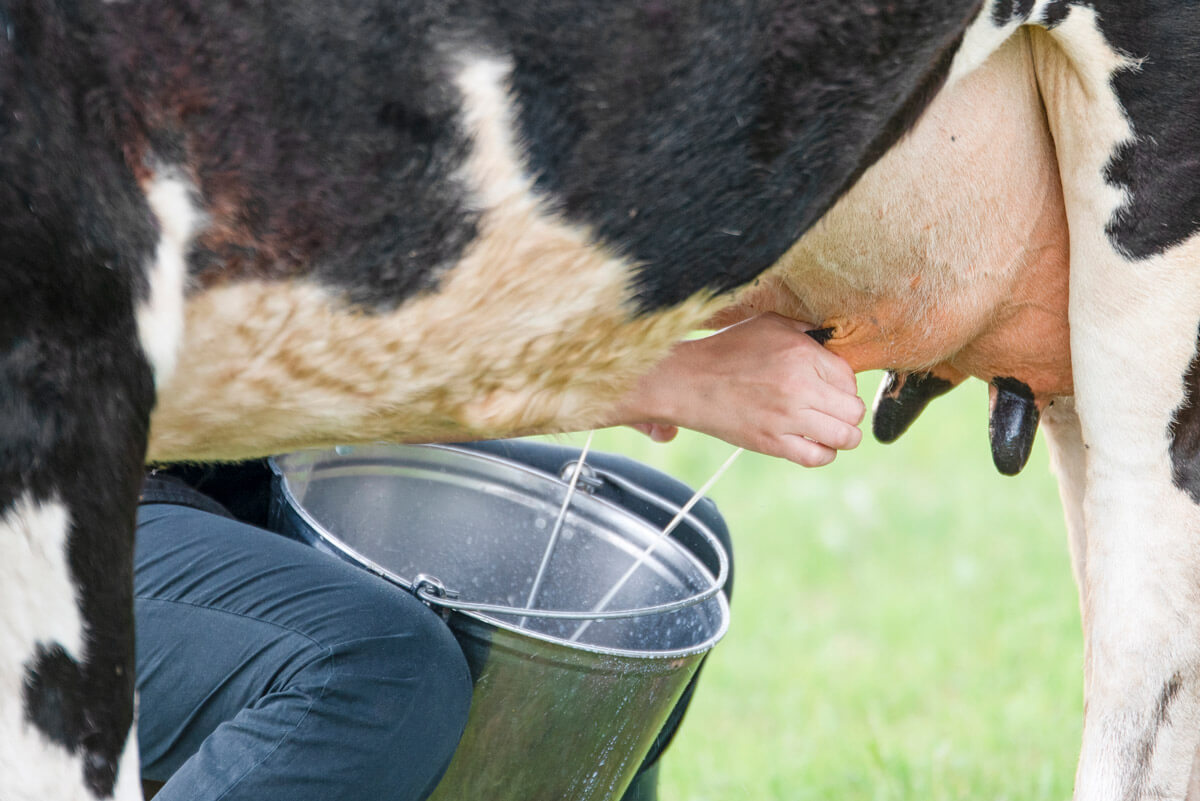Raising a family milk cow and having your own raw milk available daily doesn’t have to be only a dream. Finding grass-fed, organic, raw milk at the grocery store is difficult in some locations, so why not keep your own cow?
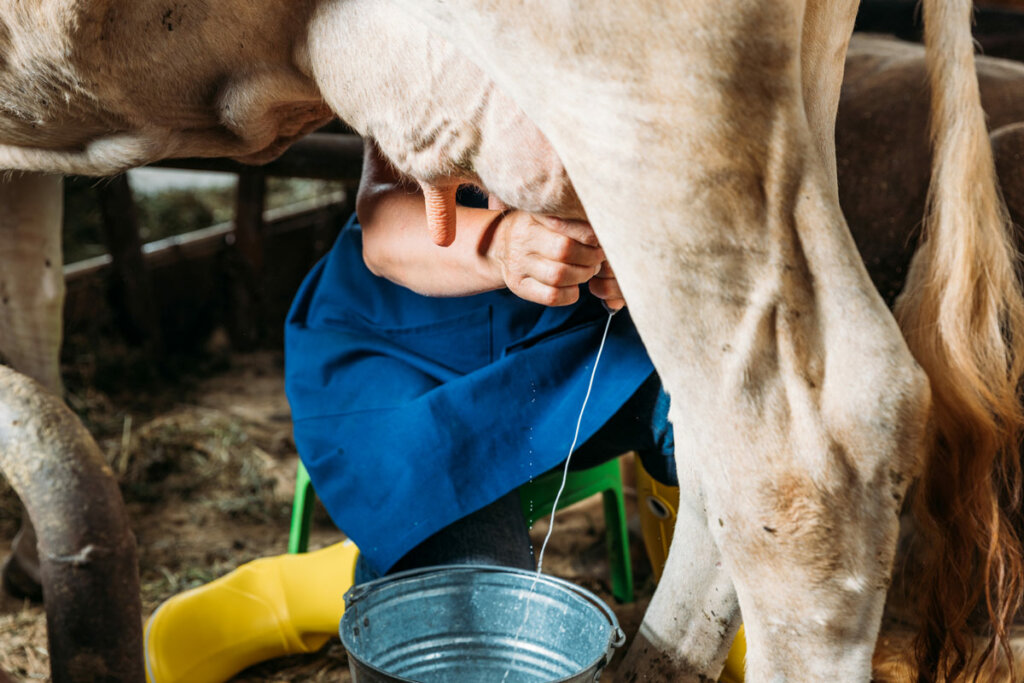
Learn when to milk a cow, the best way to handle the milk, where to store it, and what to do with the excess in this post. You’ll have fresh cream in your kitchen to make delicious, healthy dairy products for your family.
You don’t need a large barn or big pasture to keep a family milk cow, and you don’t even need a milking machine.
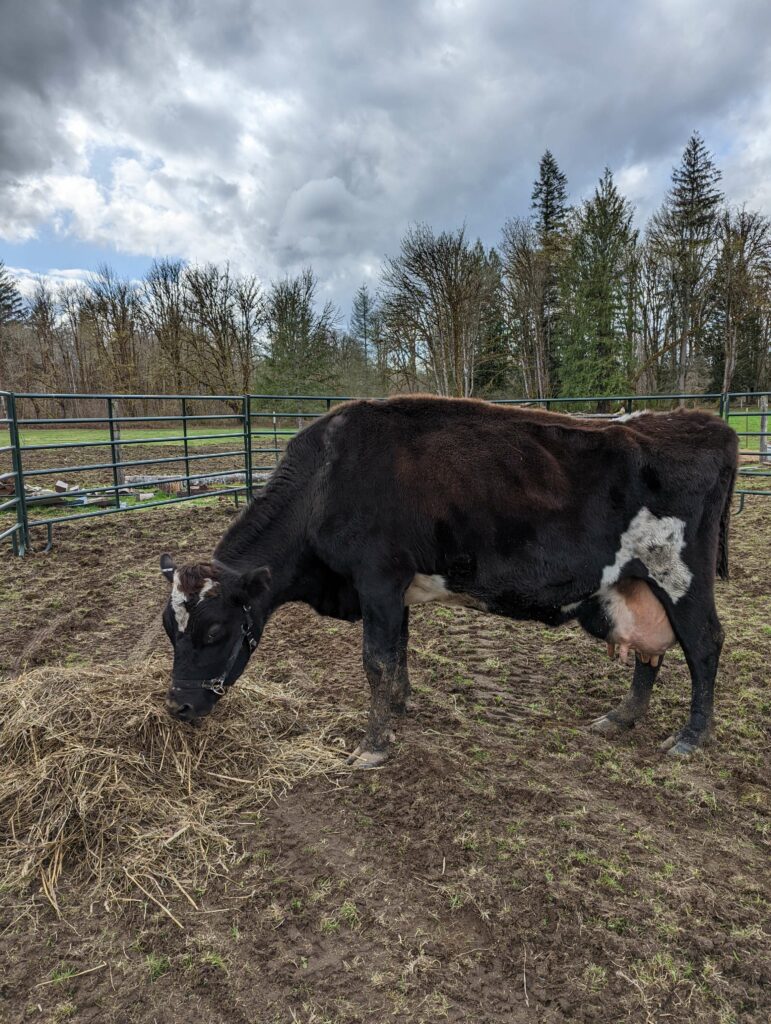
Table of Contents[Hide][Show]
Why I Chose a Family Milk Cow
A few years ago, I had my friend, Jill Winger from The Prairie Homestead, on my podcast for an interview about her experiences with a family cow. The podcast was recorded before we had our own cow, and I wanted Jill to teach me about all things cow before I made the leap to purchasing one. She taught me a lot, and I now own a cow!
That’s Clover, pictured above, and we absolutely adore her!
This is episode #144 of the Pioneering Today Podcast. If you’ve considered purchasing a family milk cow of your own, this is a must listen.

Choosing a Family Milk Cow
A Holstein or a Jersey cow is the most widely recognized breed of dairy cow. However, there are many different dairy breeds for home dairies, and they have their own pros and cons.
You’ll want to research and base your decision on what is best for your family. You can start by checking out my introduction to raising dairy cows here and what is A2 milk & what are the benefits. They have valuable information on the differences between and care for your cows.
In addition to dairy breeds, there are dual-purpose breeds where cows can be raised both for meat and dairy purposes. If that approach speaks to you, you will want to research raising grass-fed beef, the best cuts of beef for butchering, and the pros and cons of raising your own beef cows.
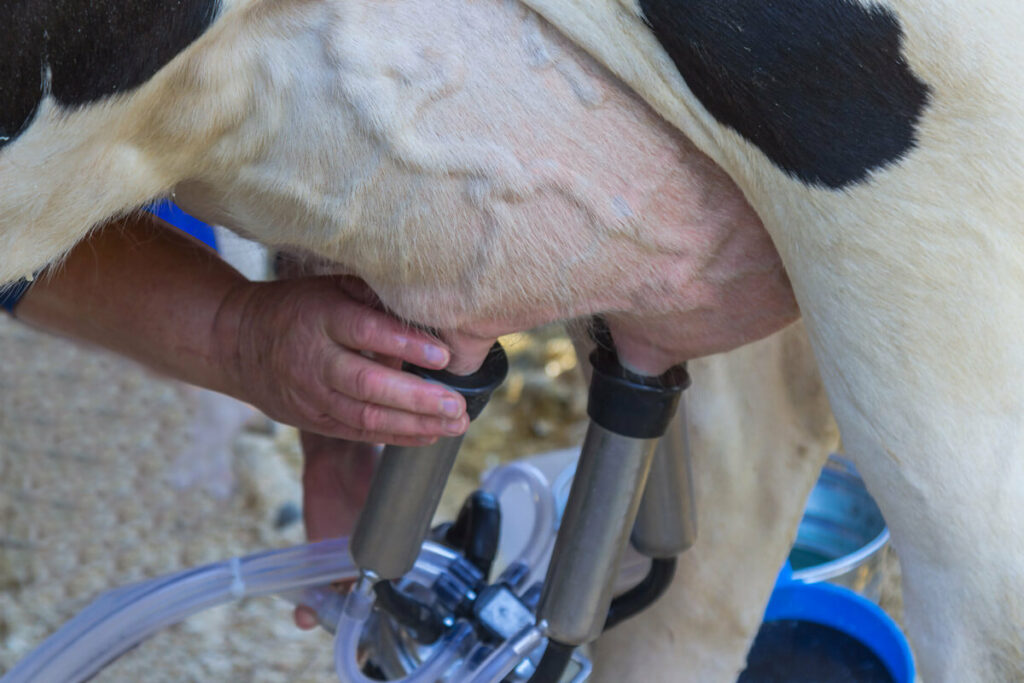
How Much Time Will My Family Milk Cow Take?
Jill says that how much time it takes to tend to and milk a family milk cow partially depends on your cow, but your milking schedule also figures into it.
If you want a plentiful milk supply, you will need to keep the calf on the cow or milk her. This can be done twice a day, or you can adapt the calf-sharing method where the cow gets milked once a day.
Pro-Tip: A side benefit of calf-sharing is that if you have days that are too busy for milking, you can skip the manual milking altogether. Calf sharing is explained below, but you will need to keep the calf with the mama if you aren’t hand milking her.
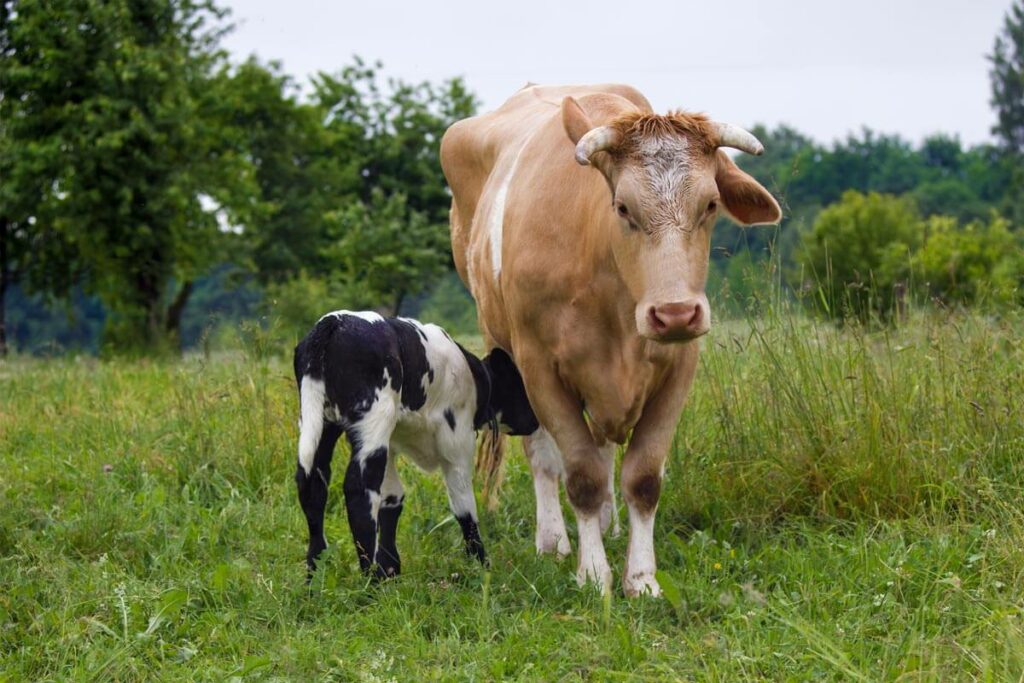
Calf-Share Method
Calf sharing is when you share the milk the mama produces with her calf. You leave the baby with the mama cow for 12 hours during the day. The calf grazes and plays in the sun with the mama eating and drinking milk freely. At night, the baby is brought inside and placed in a pen with some hay and a water bucket.
The mama’s udder will fill up with milk overnight because the baby isn’t feeding on her. In the morning, you go out and milk her and keep that milk for yourself. The baby goes back with the mama cow for the rest of the day, and the cycle repeats.
If you use the calf sharing plan, you’re only going to be milking one time a day. You’ll only have half of the time commitment that you would if you’d wean the baby early on, and you’ll have half the milk.
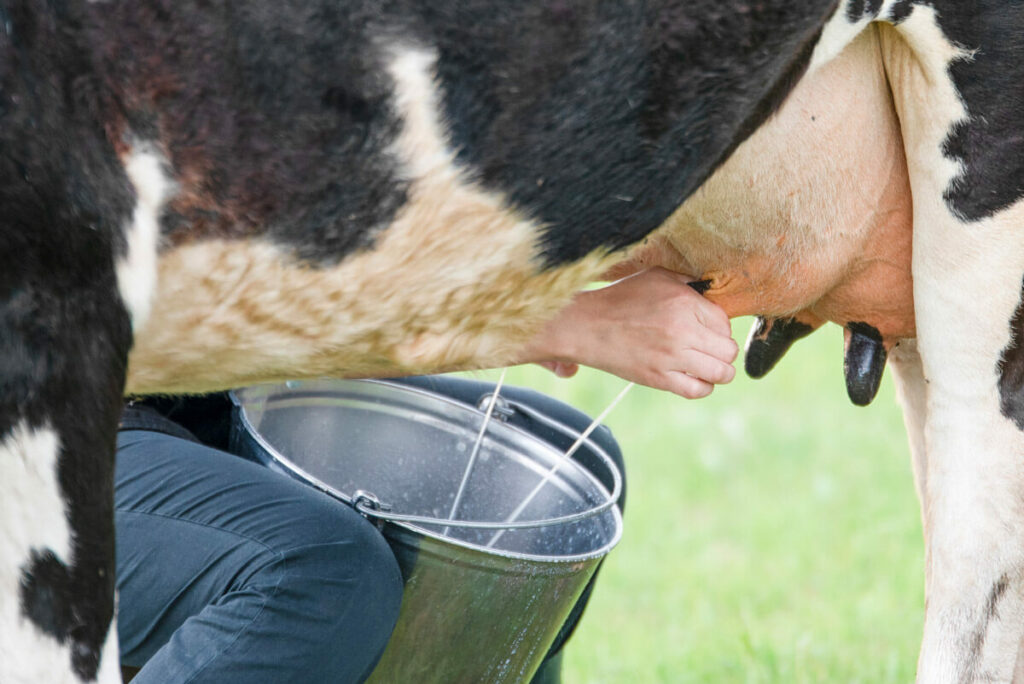
How Much Milk Does a Family Cow Produce?
The amount of milk a cow produces varies from breed to breed. Jill’s cow produces between one and two gallons per milking. On average, if you use the calf sharing method, your production will be at one to two gallons. However, if you milk twice a day, you’ll have three to four gallons of milk a day.
When to Start Milking After Calving
The cow will begin producing milk as soon as she has her calf. I asked Jill what the right amount of time is to leave the calf with the mama before you start milking the family milk cow. Jill leaves them together exclusively for two weeks.
This allows the baby and mama cow to bond and also gives the baby that nutrient-rich colostrum. The colostrum is the first milk, and it’s sticky, thick, and golden yellow. It isn’t harmful to humans, but it doesn’t taste very good.
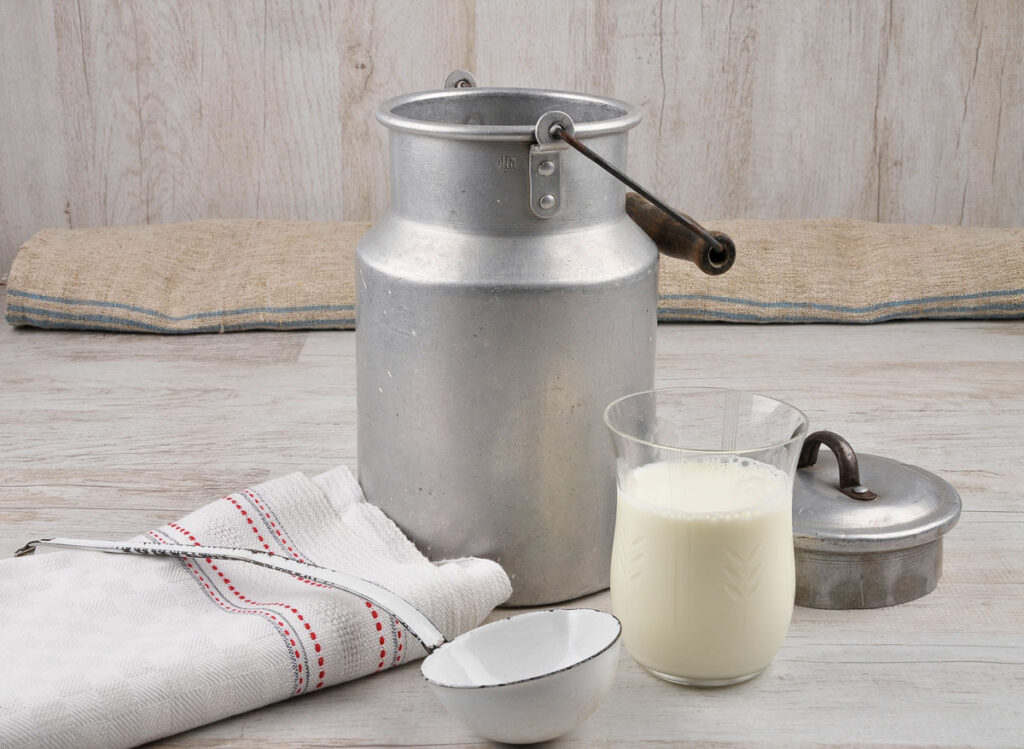
Handling the Milk, Storage, and Use
The most important thing when it comes to raw milk is cleanliness. Sterilize all materials and don’t use containers where contamination could build up (like in seams of a bucket).
The real danger of raw milk isn’t in the milk itself, it’s in the cleanliness and proper handling. If you think your milk may have been contaminated, throw it out or feed it to the animals.
Once your milk is in from the barn, Jill says that she allows the milk to sit in the refrigerator in a glass container for 24 hours. This allows the cream to rise to the top. After that, she skims the cream off the top and places it in a separate glass jar. The rich, raw milk is left. Store both in your refrigerator.
Raw milk doesn’t go bad, but it goes through different stages. It tastes best for drinking in the first few days. After it curdles or ferments, you can use it to make cheeses or yogurt. Learn here about my favorite way to make thick and creamy yogurt or how to make homemade mozzarella.
There are so many ways to use up all that cream! You can use it to make fresh butter, ice cream, and sour cream or check out my post on making real cultured buttermilk.
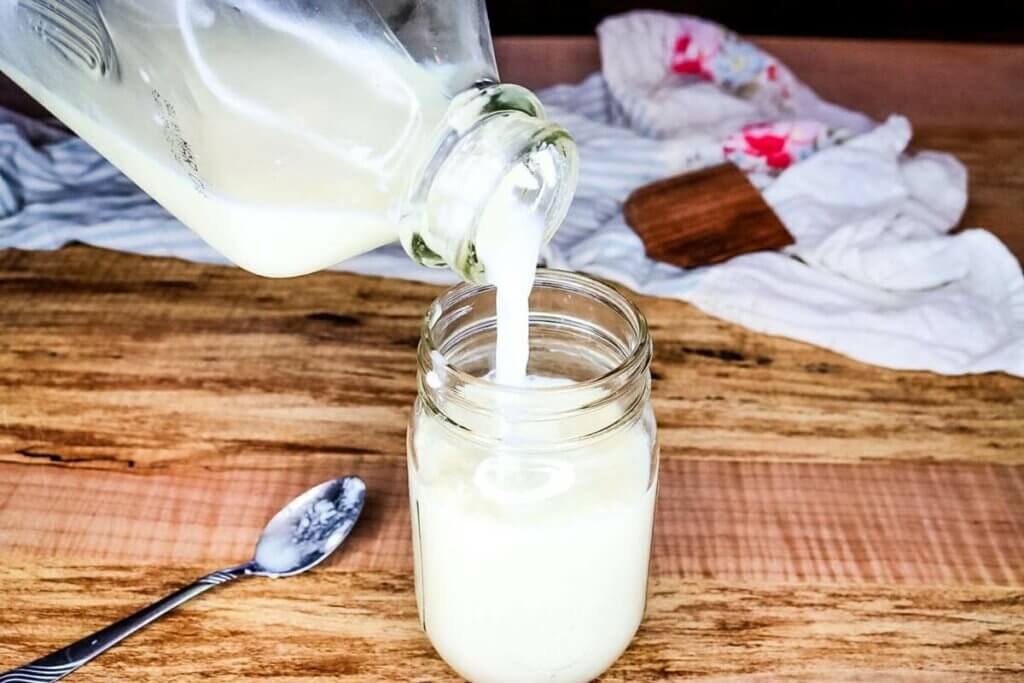
Feed Leftovers to Animals
If you have more milk than you can use, give it to your livestock. It’s free animal feed. Your chickens and pigs will be grateful for their milky treat!
Organic Fertilizer
Jill says that if she is really maxed out on milk, she’ll dilute it and put it in the yard as a fertilizer. There are always ways to use it, but you just have to be a little creative.
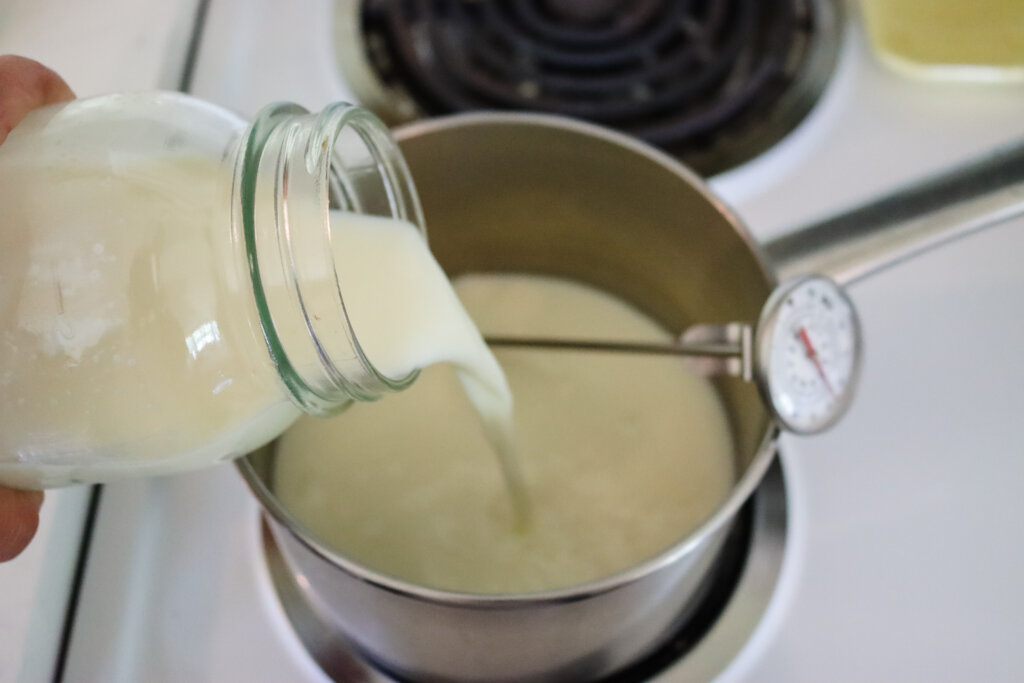
Does the Milk Need to Be Pasteurized?
No, the milk does not need to be pasteurized. That’s kind of the attraction to a milk cow in the first place. Jill says she did a lot of reading and research on raw milk and decided that she liked the idea of the health benefits it had.
It’s a personal decision because you can get a pasteurizer and go that route if you like. We prefer it raw. Strain it, keep it cold and clean, and your fresh milk is safe.
Our ancestors grew up with no refrigeration and found ways to keep the milk safe for human consumption, and I believe we can as well.
Everybody, of course, has to do their own research. With raw milk, there are risks, but most things do have a level of risk. When you know the health of your cows and are satisfied that they aren’t diseased, the risks are much lower than in a large commercial dairy.
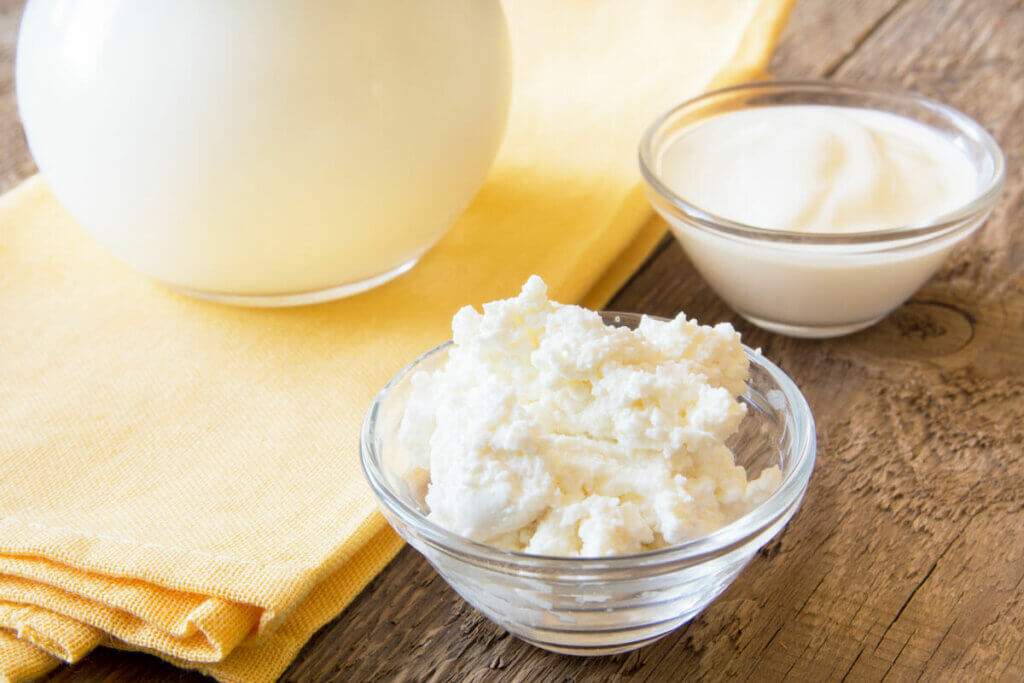
Other Posts You Might Enjoy
- Signs To Watch For With An Expecting Cow
- Scottish Highland Cows: A Unique Cattle Breed
- Your Livestock Questions Answered
- How to Preserve Meat, Eggs & Dairy
- Fermented Dairy: Why You Should Be Doing This Now
- Easy, Flaky Homemade Buttermilk Biscuit Recipe
- How to Make Flavored Butter
- Stocking Up on Animal Feed (Buy Now, Save Later)
- How to Make Homemade Melt & Pour Goat’s Milk Soap
- 6 Things Our Great-Grandparents Did Better Than Us
- How to Keep Animals Cool in Hot Weather
- 17 Self-Sufficiency Tips from Great Depression Living
